100 years ago a squadron of Ilya Muromets aircrafts was created
The appearance in the front sky of the First World War of Russian aircraft "Ilya Muromets" opened a new page in stories military aviation - the era of heavy bombers. The idea of attacking ground targets from the air appeared at the time of the balloons, and the first such experience pilots got during the Balkan Wars of the 1912-1913 years. But initially such actions could only be called a bombardment with a stretch - the pilots simply manually dropped ordinary grenades down, which were more demonstrative than practical. At the same time, in Ilya Muromets a fundamentally different approach was initially implemented.
It was an aircraft of a new generation that could deliver ammunition of much more destructive power to enemy positions. He became the first real bomber and contributed to the formation of this type of combat aircraft during the First World War. In it, bombs could be suspended both inside the fuselage, along the sides, and outside. In 1916, special electrical spreaders were installed on it to drop bombs. The defensive armament of the aircraft was impressive and consisted on some versions of 8 machine guns, which allowed it to successfully repel air attacks. Later, bombers began to appear in other countries, they actively participated in many armed conflicts of the XX century.
The aircraft was built serially in 1914-1917 in various versions (series B, C, D, E, E); a total of 73 units were built (according to other data, around 80 aircraft). "Ilya Muromets" was widely used during the First World War as a bomber, attack aircraft and long-range reconnaissance aircraft (on a wheeled, float and ski landing gear), these aircraft were also used during the Civil War. After its completion, the remaining operational aircraft were used to organize postal-passenger traffic on the Moscow-Orel-Kharkov air line.
The Ilya Muromets aircraft is inextricably linked with the name of its creator, the outstanding Russian aircraft designer Igor Ivanovich Sikorsky (1889-1972). Already at the age of 23 after a series of proposed successful inventions, he became the chief designer of the Russian-Baltic Plant and the youngest aviation inventor in the world. It was Sikorsky who was the first in the world to build a multi-engined aircraft. He was also the first to make a long-distance flight on the route St. Petersburg - Kiev. In 1919, Sikorsky was forced to emigrate from the country to the United States, where he founded the aviation company Sikorsky Aero Engineering Corporation, which was able to take a leading position in the global aircraft industry.
The history of the Ilya Muromets aircraft began in September 1912, when a very young engineer, Igor Sikorsky, received permission to build a biplane Grand at the RBVZ, the Russian-Baltic car-building plant, on his own project. The biplane was distinguished by the presence of two motors. Do not be deceived by the word "carriage" in the name of the enterprise; in those years, the RBVZ was the largest association of transport engineering in the country and engaged in the production of not only railway cars, but also automobiles, as well as a variety of engines. In 1912, the company decided to take up airplanes, getting to the point with this Russian scale. If you do, then something that no one else has done.
In many ways, this was facilitated by Sikorsky, who became the head of the aeronautic department of the RBVZ located in St. Petersburg. The materials used in the construction of the “Grand” were traditional for their time - plywood, wood, canvas and piano wire for braces. Assembled by the Sikorsky project, the car was able to rise into the sky 15 March 1913 of the year. After another month of 2, the number of engines on the Grande had grown to 4's. The engines were installed on the lower wing of the aircraft in two tandem installations. In each of these installations, one screw was pulling, and the second was pushing. After reworking, the airplane received a new name - “The Great Russian-Baltic”. In early July, 1913, Sikorsky decided to try out the new layout of the engine installation: all 4 engines were installed on the front edge of the lower wing. After the alteration, the car changed its name again, becoming the “Russian Vityaz”.
The experience of creating the Russian Knight was used to create the Ilya Muromets aircraft, which retained many of the features of the first, although the design of the aircraft was completely redesigned. The general layout of the airplane and the wing box with four engines installed on the lower wing were left without any special changes; the fuselage of the car was fundamentally different. As a result of work with the same four Argus engines with the HP 100 power. Each new aircraft had a greater maximum flight altitude and a mass load.
At the same time, the aircraft was originally designed for civilian purposes and was the first passenger plane in the world. The construction of the first sample was completed in October 1913 of the year. After conducting a series of tests on an airplane, a series of demonstration flights was conducted and a number of world records were set. In particular, 12 December 1913, the aircraft lifted 1100 kg (previous record was 653 kg). And 12 February 1914, the 16 man and dog were lifted into the air, the total weight already in 1290 kg, piloted the car by Igor Sikorsky himself.
Initially, "Ilya Muromets" was created as a civilian ship - from here he got enough comfort and space for passengers on board. It had a passenger compartment, sleeping rooms and even a bath with a toilet. Lighting and interior heating from the exhaust gases. He was not adapted for military operations, he could not carry bombs and defensive weapons. For this reason, the military used the first civilian vessels as training.
It is worth noting that the initial focus on the civilian sector at that time did not imply that when upgraded to the military version, the aircraft would become less effective. Rather, on the contrary, the increased requirements for operational safety and structural strength, which were mandatory when designing civilian aircraft, when converted into military versions only increased the operational reliability of the machines. Suffice it to recall such a successful example of alteration as a reliable front-line bomber "Henkel-111", which was created in Germany in the 1930-s based on the civil aircraft "Henkel-70".
The military quickly became interested in the new aircraft, and already 12 in May 1914, RBWZ received its first order to build 10 aircraft for the Russian army. After the start of World War I, the order was increased, October 2 signed another contract already on the 32 aircraft.
The “Type B” or IM-B serial bombers had more powerful engines (also “Argus” but two - by 140 hp and two - by 125 hp), they also carried on board 2 machine guns, bomb racks and the simplest bomb sight. According to the task of the military, the aircraft was supposed to carry at least 10 pounds of bombs (164 kg). His radius of action was 300 versts (320 km), which ensured him the achievement of goals from the Russian Empire in Danzig, Koenigsberg, Poznan, Peremyshl, Krakow. The crew of such bombers consisted of 6 people, and together with the ground crew, each car had 31 people. Since the aircraft was given special importance, the entire flight crew consisted of officers and non-commissioned officers. Even the flight mechanic was supposed to be an officer; already during the war years, mobilized engineers or students of higher technical educational institutions began to take up this position. The crew commander was an officer in the rank of captain to lieutenant colonel.
Constructive changes and improvements were made to each of the built machines as the production volumes increased: the cabin's glazing area grew, the outer contours of the wings began to be made of steel pipes, the fuel tanks were moved under the center section. Since the beginning of World War I, the Argus engines have become the most problematic constructive element. It was a powerful, lightweight and relatively reliable engine, but it was produced in Germany and their supply and delivery of spare parts with the beginning of the war, naturally, stopped. The engine was replaced by a more powerful French Salmson (225 hp), which did not please either the military or Sikorsky himself, since the engine was very unreliable in operation and capricious.
Over time, the design of the bombers were made very bold for its time, technical solutions. For example, to fight the German combat Zeppelins, an 37-mm Hotchkiss gun was even put on airplanes, but it was very difficult to shoot from it. The extent of the technical breakthrough that Sikorsky was trying to accomplish will become clear already during World War II. The practical benefit of installing guns of this caliber on an aircraft was obtained only in 1940, when Junkers installed two 87-mm BK-37 guns on its Junkers-37 bomber in the Gustav version of the dive bomber aimed fire.
Combat application
Russian aviation acquired its first combat experience in 1912 during the Balkan Wars. At that time, an air squad formed of civilian volunteer pilots (Agafonov, Evsyukov, Kolchin, etc.) was sent to Bulgaria. On the eve of World War I, the Russian Empire had the largest air fleet among all the howling powers: 244 aircraft, which were consolidated into 39 squadrons. By the time the hostilities began, there were 221 pilots in the country's air fleet: 170 officers, 35 lower ranks and 16 volunteers.
Already in the second half of 1914, the first Ilya Muromets bombers began to appear on the front. Given the real experience of their use, Igor Sikorsky promptly made changes to the design of machines. From series to series the bomber improved. The most effective use of these machines at the front is associated with the name of MV Shidlovsky - the chairman of the board of the RBVZ, as well as the first head of the Air Ships Squadron organized on his own initiative. On December 23, all the Ilya Muromets bombers operating at the front were brought together in a squadron, and this day is celebrated today in the Russian Federation as the Day of Long-Range Aviation. These aircraft were a special force in the armed forces of Russia and reported directly to the High Command.
With the formation of the Squadron of Airships, for the first time in the world in Russia, a strategy and tactics were developed for the use of large formations of heavy bomber aircraft, and a system for their support was developed. The Ilya Muromets aircraft could take aboard bombs unprecedented for that period of time - up to 25 pounds (410 kg). At the same time, the Ilya Muromets bombers had strong defensive weapons, which had almost no “dead zones”, which is why the losses of the bombers at the front were only one aircraft. For such an amazing defenses, the enemy called the four-engine aircraft "hedgehogs".
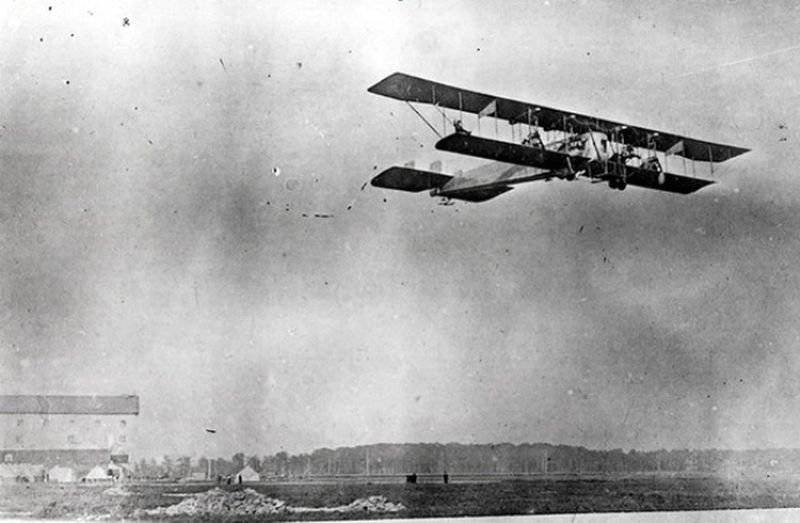
At the end of February, 1915, the Ilya of Murom, conducted the first massive bomb strike. It was applied by the Austrian railway station Willenberg. As a result of the air strike at the station, the railway tracks were destroyed, as well as the very structure of the station, the rolling stock and the enemy's manpower were destroyed. During the execution of this raid, the crew of the pilot Gorshkov for the first time carried out aerial photography of the destruction, which received enemy positions. Soon, 18 in March of the same year, the crew of Gorshkov made a long reconnaissance flight on a closed route, breaking more than 600 versts: Jablonna-Willenberg-Naidenburg-Zoldau-Lautenburg-Strasbourg-Thorn-Plotsk-Mlava-Yablonna. In addition to the crew, on board the bomber there was the head of the 1 Army Intelligence Division, Captain von Goerz. During the flight, more than 50 photographs of enemy positions were taken from the aircraft.
The combat experience acquired by Russian pilots over time was generalized, studied and reflected in manuals and instructions. So already in 1916, in the Russian Empire, "Initial instructions for organizing and performing group flights" were issued. After that, the “Draft Manual on the Use of Aviation” was introduced, emphasizing that in order to inflict significant damage to the enemy, it was necessary to simultaneously drop large numbers of aerial bombs from aircraft. It was also indicated the expediency of flying heavy bombers at night. The drafters of the “Project Guidance” concluded that the best result can be achieved only when making group raids, ensuring the effect of surprise and consistency of air strikes with actions taken by ground forces.
During the First World War, the first generation of Russian aviators, having achieved significant success in mastering the latest aviation technology, was able to make a significant contribution to the development of piloting technology and the use of heavy aircraft and their combat use. Combat activities of the squadron of aircrafts marked a very important stage in the history of domestic long-range aviation. Combat practice has demonstrated that bombing strikes against targets that are located in the operational rear of the enemy for heavy aircraft are the main task. Carefully studying the experience gained during the First World War, the father of Russian aviation, Professor N. Ye. Zhukovsky and his followers created the work The Theory of Airplane Bombing, which became the basis for the development of another branch of aviation science, aerobalistics.
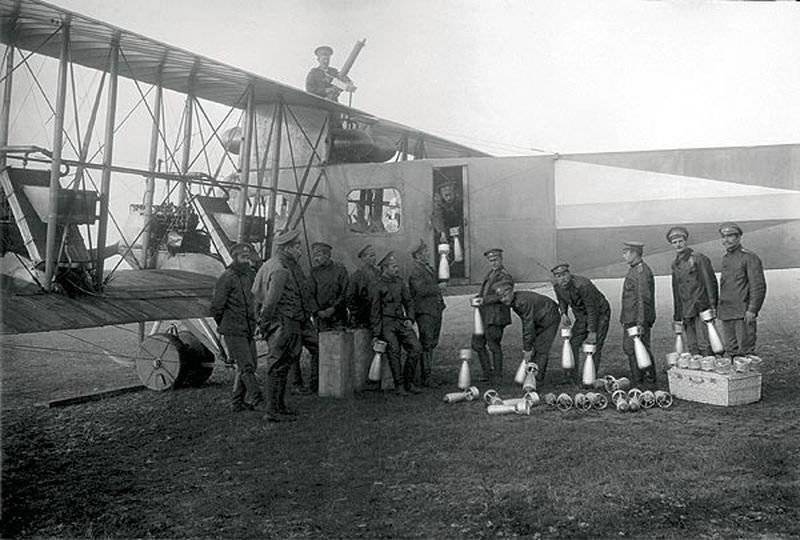
It is worth noting that the combat use of the “Muromtsev” demonstrated the amazing survivability of these aircraft. During the entire existence of the squadron Shidlovsky performed 400 combat missions, dropping 65 tons of aircraft bombs and destroying enemy fighters in air battles to 12. In this case, the irrecoverable loss of the connection was only one aircraft. Two more cars were shot down by enemy anti-aircraft artillery, and one of the aircraft, which was controlled by Lieutenant Konstanczyk, was able to get to the airfield, but due to severe damage was not subject to recovery.
Information sources:
http://histrf.ru/ru/lenta-vremeni/event/view/il-ia-muromiets
http://rusplt.ru/ww1/history/rekordyi-ili-muromtsa-12210.html
http://www.aircaft.ru/history/jets-giants-of-the-ussr/3114-ilya-muromets-i-eskadra-vozdushnykh-korablej.html
http://www.museum.ru/N45412
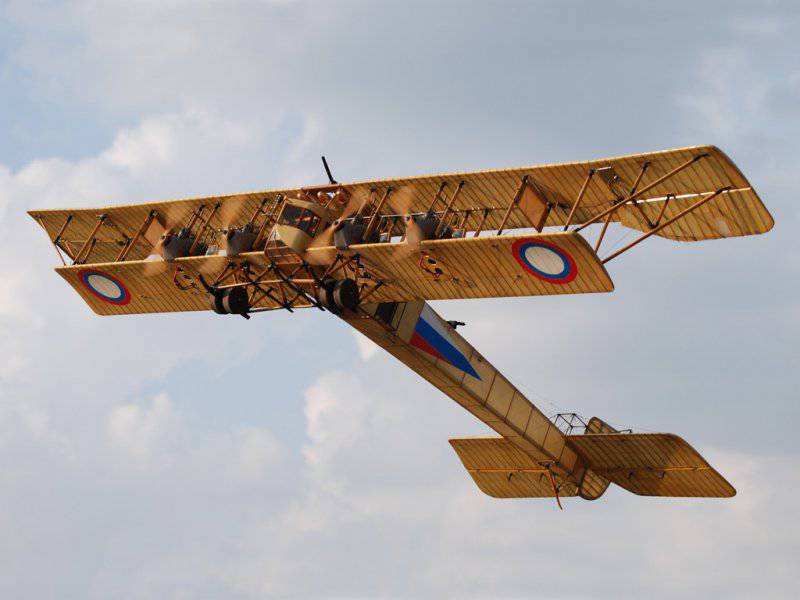
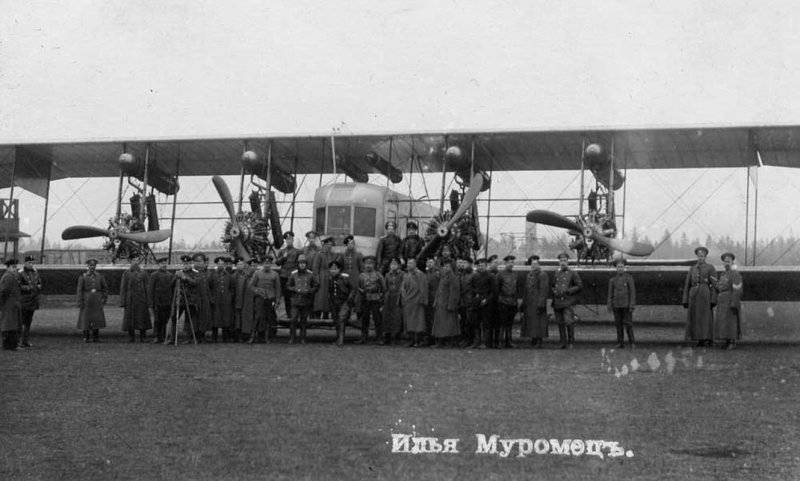
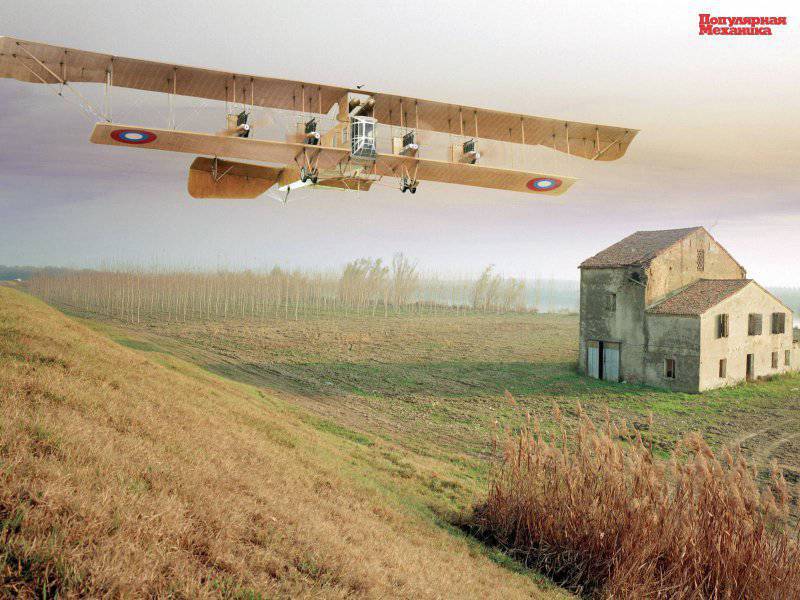
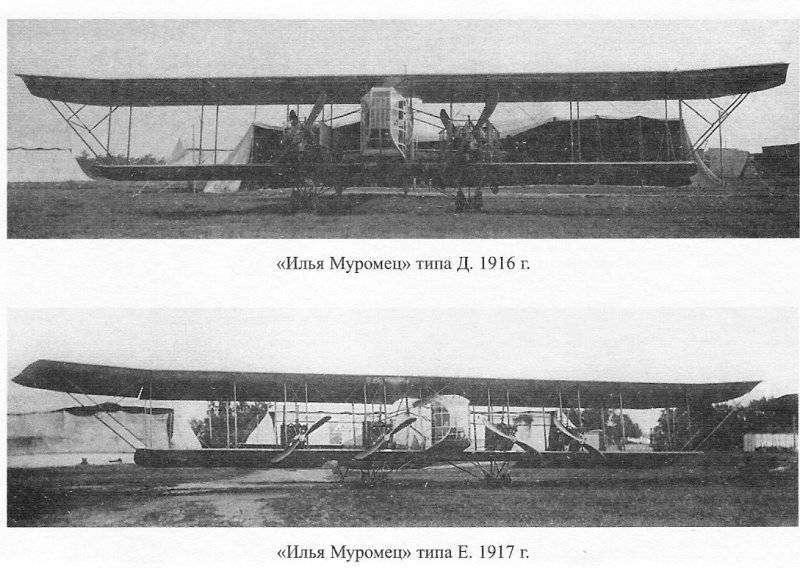
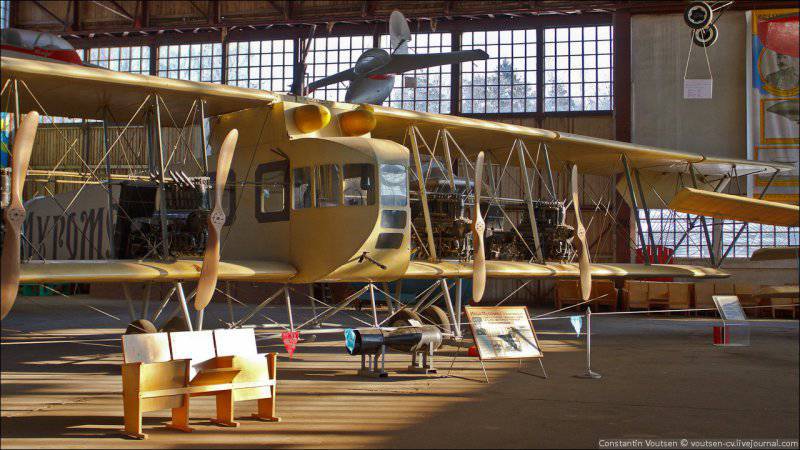
Information